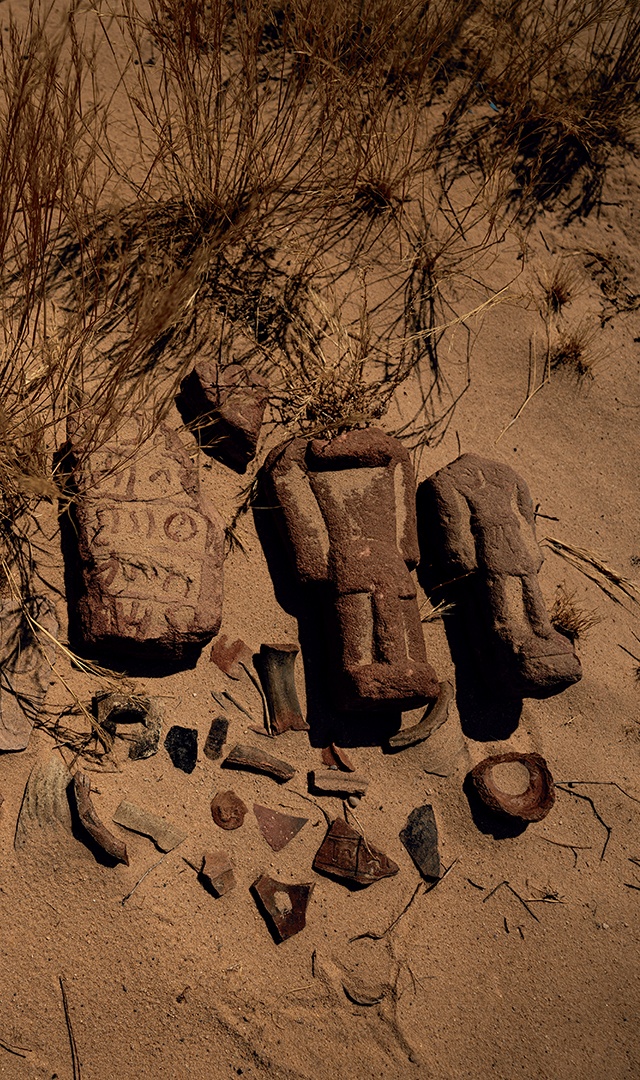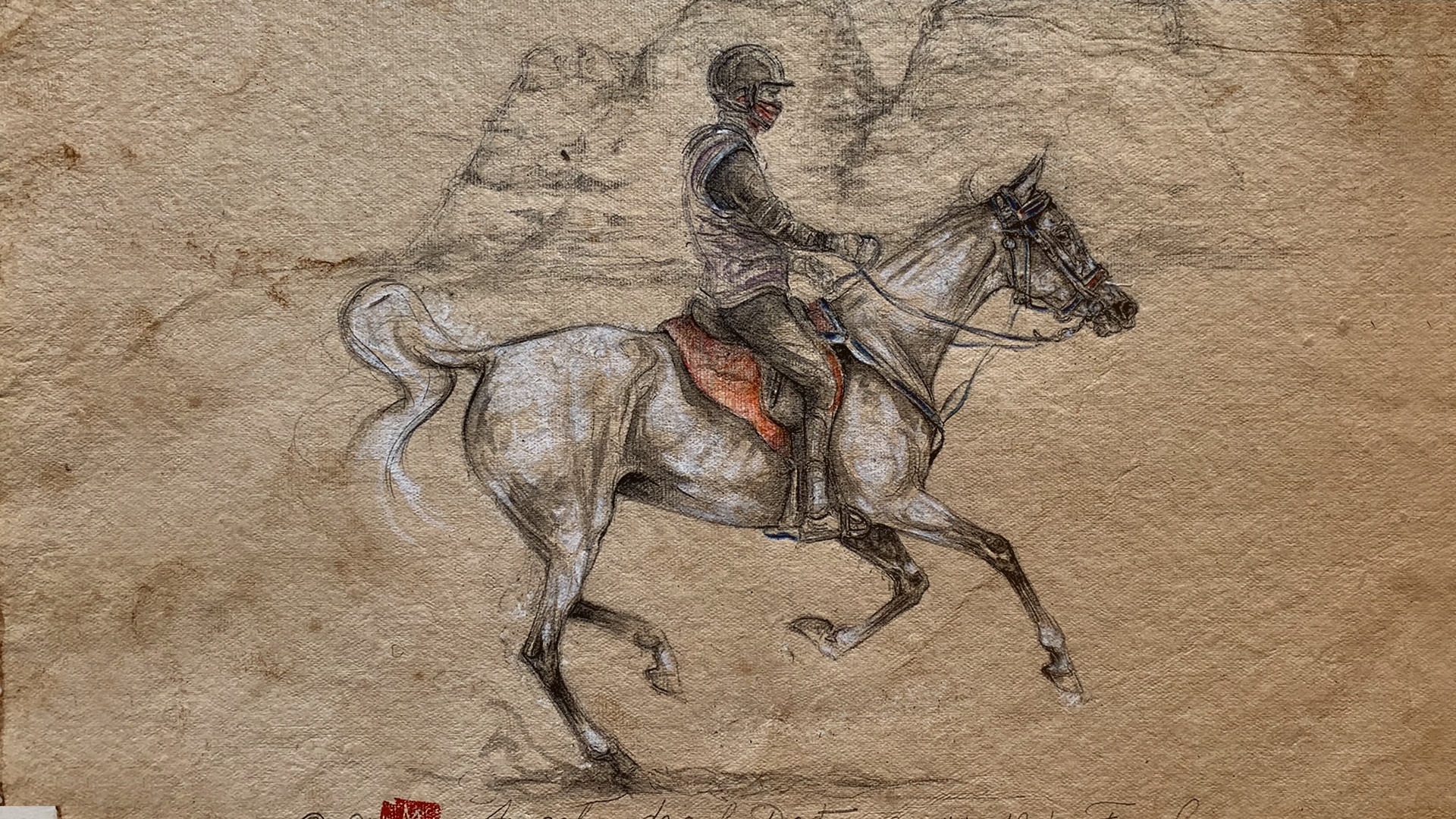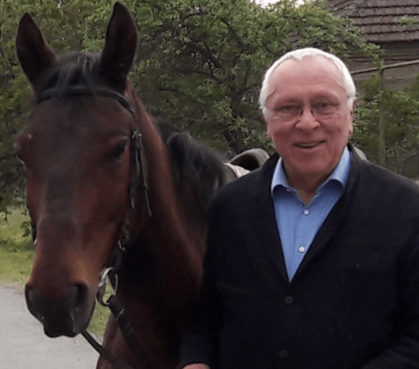0

0




Eyes on




Marine Oussedik is a French painter,
sculptor, and illustrator. Globally
reputed for her equestrian drawings,
she published several works on
horse practice and especially on
the Arabian horse.




Jean-Louis Gouraud is a French writer and publisher, specialized in horse history. Motivated by his passion, he strives for the recognition of the horse in the cultural world.

- Share -


NAVIGATION






AlUla is perhaps the most beautiful racecourse in the world! The most beautiful, the largest, and certainly the most natural.
True, it bears no resemblance to those racetracks of antiquity, which were little more than circular tracks.
They were grandiose, but narrow. It also bears no resemblance to today's racetracks, which while they are sometimes very beautiful architectural achievements, still lack that something specific which can be found in AlUla: space, grandeur, and the incredible beauty of infinite nature.
Racetracks were built by people, for the entertainment of people. It seems that the vastness of AlUla, on the contrary, was created for the horse. It is a place where a horse can feel and breath free, unrestrained on invisible wings.
AlUla offers a majestic landscape of golden sand and ocher rock outcrops like monumental sculptures. The site seems to have been specifically created so that the Arabian horse can express and prove its talents.
The Arabian thoroughbred is of incomparable grace and elegance. It has always been sought after for its vigor, its vivacity and its passion.
As early as the 18th century, Europeans began to crossbreed Arabian horses with local stock: it was thought at the time to be a question of putting “blood under the mass”.
It was certainly noted that this crossing of blood improved European equine performance. Undoubtedly a challenge to contemporary notions that progress traveled eastwards.
But despite these apparent merits, their use as breeding stock for the West was not the main asset of this noble race born under the skies of Arabia. The main strength of Arabian horses lies in their prodigious endurance. Their courage, tenacity, and temperance. And resistance too: few living beings are capable of being so resilient and hardy. The purebred Arabian combines these two qualities effortlessly.
To demonstrate this, there is even a discipline – recognized and regulated by the International Equestrian Federation – called Endurance.
I don't know if the AlUla site will one day be, as its developers seem to wish, an international center for equestrian sports (Dressage, Jumping, Polo, etc.), but I'm sure of one thing: it has everything needed to become a world leader in Endurance.
AlUla is perhaps the most beautiful racecourse in the world! The most beautiful, the largest, and certainly the most natural.
True, it bears no resemblance to those racetracks of antiquity, which were little more than circular tracks.
They were grandiose, but narrow. It also bears no resemblance to today's racetracks, which while they are sometimes very beautiful architectural achievements, still lack that something specific which can be found in AlUla: space, grandeur, and the incredible beauty of infinite nature.
Racetracks were built by people, for the entertainment of people. It seems that the vastness of AlUla, on the contrary, was created for the horse. It is a place where a horse can feel and breath free, unrestrained on invisible wings.
AlUla offers a majestic landscape of golden sand and ocher rock outcrops like monumental sculptures. The site seems to have been specifically created so that the Arabian horse can express and prove its talents.
The Arabian thoroughbred is of incomparable grace and elegance. It has always been sought after for its vigor, its vivacity and its passion.
As early as the 18th century, Europeans began to crossbreed Arabian horses with local stock: it was thought at the time to be a question of putting “blood under the mass”.
It was certainly noted that this crossing of blood improved European equine performance. Undoubtedly a challenge to contemporary notions that progress traveled eastwards.
But despite these apparent merits, their use as breeding stock for the West was not the main asset of this noble race born under the skies of Arabia. The main strength of Arabian horses lies in their prodigious endurance. Their courage, tenacity, and temperance. And resistance too: few living beings are capable of being so resilient and hardy. The purebred Arabian combines these two qualities effortlessly.
To demonstrate this, there is even a discipline – recognized and regulated by the International Equestrian Federation – called Endurance.
I don't know if the AlUla site will one day be, as its developers seem to wish, an international center for equestrian sports (Dressage, Jumping, Polo, etc.), but I'm sure of one thing: it has everything needed to become a world leader in Endurance.


Jean-Louis Gouraud is a French writer and publisher, specialized in horse history. Motivated by his passion, he strives for the recognition of the horse in the cultural world.

